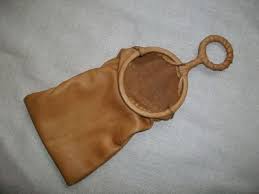Pockets. Not only was there this ridiculous fashion era where women had to wear pantyhose (I have that lived experience and will never go back), but we women didn’t get pockets in our clothing until the 17th century. And they weren’t even pockets the way we think of them today (1). Men have had real pockets since the Renaissance.
Let’s just call this what it is. Systematic fashion sexism (2)
By “pockets,” I’m using the modern definition—a pouch or envelope sewn directly into clothing. Women’s fashion finally developed true pockets when they began to work outside the home in the mid 19th century AND with the push for equality and suffrage in the early 20th century (3). There is also this conspiracy theory that the whole lack of pockets in women’s fashion has been pushed by the evil Handbag Industrial Complex (4).
“Potenza,” you say. “Your Euro-centric White privilege is showing.” “You are wrong!” I retort like a Karen. I checked out online articles on pockets in the history of Chinese (5), Indian (6), African (7), and Native American/First Peoples (8) clothing. It appears that sewn-in pockets were a European invention and considered “foreign” (7) in other cultures.
What did the people of the world use before the advent of pockets? Well, pockets. But these olden day pockets were detachable. They could be made of cloth or leather, could be hung on a belt or chain, tied to girdle or band around the waist. And they’ve been used for millennia. Even Ötzi, the 5000-year-old Neolithic mummy found in the Alps, carried a pouch full of Useful Stuff (9), like birch fungus with anthelmintic properties—basically, a medicinal de-wormer.
OR … these olden pockets could be sewn onto a large ivory ring that acted an opening wide enough for a hand to slip inside. In fact, this was a fashion trend among elite Anglo-Saxon women in England during the 5thto 7th century A.D. Hundreds of burials have shown these women interred with a bag-ring of ivory hung from a belt around their waist (10). In these bags were small, sometimes random-seeming objects like broken copper, Roman coins, beads, jewelry, and other bits of personal treasure.
The source of this bag-ring ivory has been a puzzle—were they walrus, elephant, or even mammoth? But recently, a group of scientists did a systematic evaluation of the ivory rings and found they are made from elephant tusks (11). Radiocarbon dating placed the elephant ivory age in the same centuries as the Anglo-Saxon burials. And ZooMS (Mass Spec) identified collagen peptides found in the ivory as coming from African elephants.
But where in Africa? This is historically important because whatever trade route that brought the bag-rings to England has been lost in time. It turns out the periodic table element Strontium (Sr) solved that mystery.
Sr is found in the 5th period directly under Calcium (Ca). Its atomic number is 38, and there are four naturally occurring isotopes with molecular weights ranging from 85 to 88. 87Sr is radioactive with a half-life of 48.8 billion years—so, stable. The ratio of 87Sr/86Sr is used in geochemistry to find the origination of objects like bones and ivory because different locations on the earth have differing ratios of Sr in rocks and water sources, which moves through the food chain and are incorporated in plants and animals (12).
So where does this ivory in the Anglo-Saxon graves come from? Probably from an area in east Africa between Ethiopia and Eritrea. More specifically, from the Kingdom of Aksum (13), which was known at later time periods to dominate trade routes to Persia and the Red Sea and had an association with ivory workings (11).

From sewn-in pockets (or lack there-of) to pouches to ivory bag-rings in Anglo-Saxon burials to Elephant tusks from the Ancient Kingdom of Aksum. It’s amazing where the Periodic Table of Death takes us. I thoroughly enjoyed the ride.
I’m going to suggest a song and a movie to go along with this post. They are “retro” and have something to do with elephants (haha!) The song is an unusual one because it features a marching band as backup. Can you guess what it is? And the movie is one that filled the theater the first time I saw it and I have never laughed so hard in my life.
- https://www.vam.ac.uk/articles/womens-tie-pockets
- https://badgerherald.com/artsetc/2022/09/25/in-the-pocket-of-the-patriarchy-history-behind-the-absence-of-pockets-from-traditionally-female-clothing/
- https://pieceworkmagazine.com/a-brief-history-of-the-pocket-in-womens-fashion/
- https://www.boredpanda.com/womens-clothes-do-not-have-pockets/?utm_source=google&utm_medium=organic&utm_campaign=organic
- https://europe.chinadaily.com.cn/culture/2011-02/15/content_12039146.htm#:~:text
- https://feminisminindia.com/2018/06/05/sexism-pockets-women-clothing/
- https://www.lovetoknow.com/life/style/north-africa-history-dress
- http://www.nativetech.org/clothing/pouch/pouches.html
- https://en.wikipedia.org/wiki/Ötzi
- https://www.yahoo.com/lifestyle/enigmatic-anglo-saxon-ivory-rings-150748214.html
- https://www.sciencedirect.com/science/article/pii/S2352409X23001189
- https://isobarscience.com/strontium/application/#:~:text
- https://education.nationalgeographic.org/resource/kingdom-aksum/





 Platinum, Golden Years, and the Periodic Table of DEATH and Mystery
Platinum, Golden Years, and the Periodic Table of DEATH and Mystery
Leave a Reply